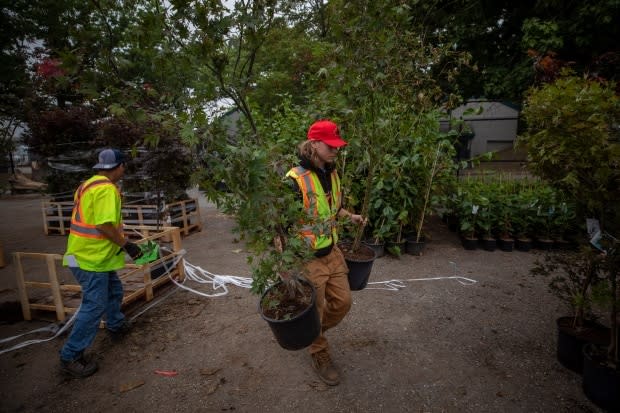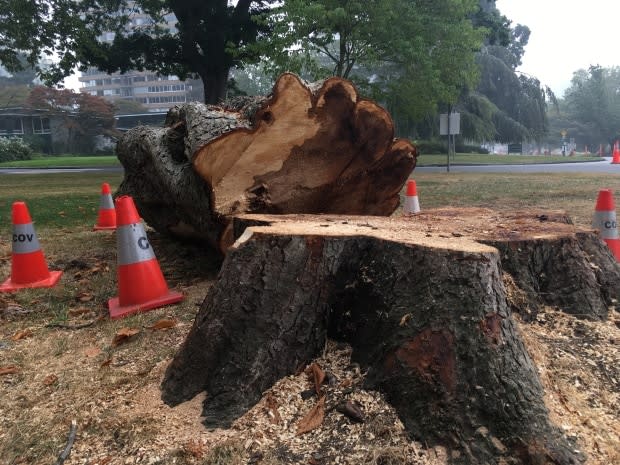City of Vancouver to meet 10-year tree planting goal
An ambitious plan put in place 10 years ago to address the loss of trees in the City of Vancouver will be met by the end of the year, officials say.
Urban foresters, along with homeowners and some developers, are all scrambling to plant the final 5,000 trees of an ambitious plan to put 150,000 trees into parks, along streets and on private property.
"The city should absolutely be proud," said Joe McLeod, city arborist and supervisor of urban forestry.
The goal, set in 2010 as part of the Urban Forest Strategy, was an attempt to increase the city's canopy — the area covered by leaves when seen from the air — from 18 to 22 per cent.
A combination of development, pests and property owners bent on improving their views, caused that figure to decline.
Urban forests clean the air, slow climate change, ease strong winds, conserve rainwater, provide wildlife habitat and contribute to a sense of well-being for city residents.

Aaron Jasper, who was a park board commissioner from 2008 to 2014, remembers being startled by the analysis which showed the loss of trees and their accompanying benefits.
"Not only are the trees beautiful but they truly are vital for the health of our communities," he said. "It was a no-brainer as to why we needed to enhance our urban forest."
Since then, roving bands of city foresters have spent six months of every year planting thousands of trees on public land. The park board also began offering $10 trees to residents to plant on their properties. The sale is currently on again.
McLeod said changes to bylaws that made it more difficult for property owners to remove mature trees helped stem losses. Partnerships with developers to replace trees cut down have also helped.
According to McLeod, roughly 25,000 trees are needed to increase the tree canopy by one per cent.

Will the trees survive?
Despite all the planting, it's unclear how much the 150,000 trees have, so far, increased the city's tree canopy.
Staff say it can take up to 20 years for a newly planted tree to make a difference.
There are also losses to consider. More than 1,000 street or park trees either die or need to be removed each year either due to disease, age or some other problem, such as drought.

"I think the bigger challenge that lies ahead is stewardship of all those trees to ensure that they survive and flourish," said McLeod.
Other areas of the city, such as the Downtown Eastside, or places with more industry than housing, such as False Creek Flats which have fewer trees or are more difficult to plant in, will now be targeted.
'Afraid of trees'
Stephen Sheppard, a professor at UBC's faculty of forestry, says figuring out how to plant trees in neighbourhoods that didn't see a lot of the 150,000 tree initiative is a good next goal.
"It's kind of a green equity problem," he said.
His students have canvassed neighbourhoods like Sunset or Renfrew-Collingwood and found barriers for some residents to planting trees on their properties.
"What we found … were that people were in some cases afraid of trees," he said. "They don't have any sort of precedent for them."
Some people don't understand the benefits more trees will bring or are afraid they will get too big or have limbs that will fall, he said.
He says more programming is needed to engage residents about the benefits of tree planting and how to do it.


